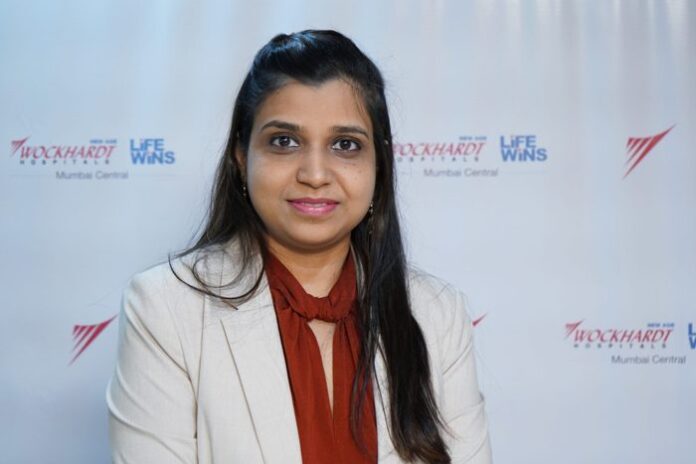By Dr. Shraddha Deshpande, Aesthetic, Plastic & Reconstructive surgeon, Wockhardt Hospitals, Mumbai Central and Dr. Gulshan Rohra, Cardiothoracic Surgeon, Wockhardt Hospitals, Mumbai Central
The patient was diagnosed with a deficiency in proteins called Protein C and S. This condition led to a series of serious complications related to blood clotting, including blockages in multiple arteries, a blockage in the main artery supplying the retina in her eye, and non-bleeding areas of tissue damage (infarcts).
A 47-year-old previously healthy woman, started having trouble seeing clearly with both of her eyes. Her left eye was particularly affected. At the same time, she felt throbbing pain in her left hand. For this, she tied it tightly with her saree, which caused her left palm to turn blue. Additionally, for several years, she had been experiencing occasional difficulty breathing and a dry cough.
Concerned about the condition, the patient sought medical attention at a nearby hospital in Byculla. An arterial doppler test revealed low resistance of blood flow in the left distal radial artery at the wrist, likely due to reduced blood supply. She was subsequently admitted to Wockhardt hospital for her further treatment.
Upon admission, the patient underwent urgent peripheral angiography, which revealed a 100% blockage with clot formation in the left brachial artery. An immediate clot suction procedure was performed to restore blood flow. Subsequently, the patient was transferred to the Intensive Care Unit (ICU) for further monitoring and management. Blood-thinning medications were administered to prevent further clot formation. Additionally, a thrombophilia panel was sent for testing to assess the presence of any underlying blood clotting disorders.
To address concerns regarding the catheter’s functionality, a fluoroscopy-guided examination was conducted, revealing the presence of clots in the artery of the hand. Multiple clot suction procedures were performed using a clot extraction device.
A subsequent MRI brain with angiography indicated multiple small non-hemorrhagic infarcts and blood vessel occlusion. The patient was referred to Dr. Gulshan Rohra, Cardio-thoracic Surgeon for surgical intervention. Thereafter she was operated for an urgent left forearm volar dorsal fasciotomy, carpal tunnel release and clot extraction from the brachial artery, which was performed by Dr. Shraddha Deshpande and Dr. Gulshan Rohra.
During the surgery, a complete loss of blood flow below the wrist level was observed, with the fingers presenting dryness and blackish discoloration.
She eventually had to undergo amputation of her hand, however most of the forearm could be salvaged.
Due to blurring of vision in the left eye, the patient was referred to Dr. Kataria for an ANA blot and fundoscopy (eye examination), which confirmed central retinal artery blockage caused by a clot.
The patient’s stay in the hospital was uneventful thereafter and she was discharged after appropriate recovery and monitoring.
Dr. Gulshan Rohra, Cardiothoracic Surgeon, Wockhardt Hospitals, Mumbai Central says, “This case emphasizes the complications associated with Protein C and S deficiency, leading to catastrophic multiple artery thrombosis in a young female patient. The management involved urgent clot suction, blood-thinning medications, surgical interventions, and multidisciplinary consultations. Through prompt medical intervention and careful monitoring, the patient achieved stabilization and successful recovery. This case highlights the importance of early detection and appropriate management of thrombotic disorders, especially in individuals with underlying clotting deficiencies.”
Dr. Shraddha Deshpande, Consultant Plastic, Reconstructive and Aesthetic Surgeon, Wockhardt Hospitals, Mumbai Central, said ” Being a part of the multidisciplinary team that provided comprehensive care to this patient with Protein C and S deficiency and catastrophic multiple artery thrombosis was a great experience. The surgical interventions, such as volar dorsal fasciotomy, carpal tunnel release, and clot extraction, played a crucial role in restoring blood flow and preventing further complications. Our objective was to optimize the patient’s condition and ensure the best possible outcome. Working in collaboration with Dr. Gulshan Rohra and other specialists, we diligently pursued successful stabilization and facilitated the patient’s recovery.”






















